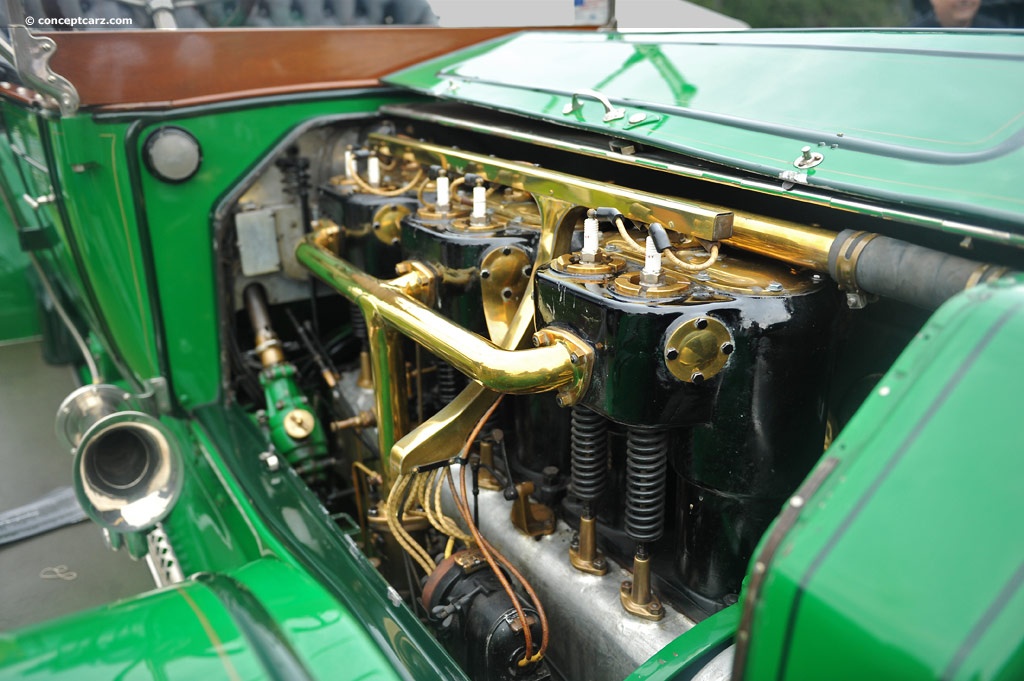(Photo credit: ConceptCarz.com) – Being that we live in the world of the 100+ hp per liter of displacement engine now, what about the other end of the spectrum. Human history pretty much guarantees that if we’re obsessed with tiny engines these days we were once obsessed with massive engines, right? The fact is that we were and three of the biggest production car engines in United States measured out at more than 800hp and none of them made 100hp. That being said, for their day, the performance, prestige, noise, and consumption was absolutely other-worldly. These were not engines found in the flivvers that were carrying families to church and town. Nope, these mountain motors were found in some of the finest cars of the day. Yes, they are amazingly crude by today’s standards of engineering but back then they may as well have been spacecraft in the days before WWI when steam was still powering lots of the world. So, let’s take a look at the “Big three” which are the 1914 Peerless 6-60 which measured out to some 823ci, the 1918 Fageol touring car which displaced about the same, and the 1916 Pierce Arrow which also fell into the mountain motor 820ci production car engine category.
1914 Peerless –
Coming in with an official measurement of 824.8ci is the 1914 Peerless 60-6 Series Touring car. The 60-6 stood for 60mph and 6-cylinders. The sixty mile per hour number was a big one as there were scant few “production” cars that could achieve that speed before WWI. Remember that there was a common belief that humans could not withstand those speeds and that you’d essentially choke to death if you tried it. Hey listen, we’re not right all the time either so we sympathize with whatever medical school dropout formulated that half baked idea. The engine was of the T-head design and had a five inch bore with a seven inch stroke. Think of a T-head as like a crossflow flathead. The intake valve was on one side of the piston and the exhaust on the other but in the way a flathead valve out be, meaning upside down. The engine had 7-main bearings and was rated at 60hp. The “redline” was likely below 2,000rpm but fuel consumption had to have been as bad as you’d expect.
The car itself was no spring chicken either. Rolling on a 140-inch wheelbase, it was of the same monster proportions as its power plant. It did run a subtle 38″ wheel if that’s any indication of its actual dimensions.
1918 Fageol Touring Car –
Fageol doesn’t sound like an American company but it sure was. Based out of California it was a successful maker of trucks, tractors, and buses through the 1920s. While the company faltered and closed it doors in the 1930s, the factory and its contents were scooped up by a guy named TA Peterman in 1938 and in 1939 the first Peterbilt trucks were produced, so in essence the ghosts of the company live, even today. But enough about that, how about the insane cars that the company made. Well, there were only two models produced and at that, they were very low production due to their high cost and for another, far more interesting reason. How about the fact that they used a massive 825ci Hall-Scott airplane engine and once WWI broke out, it was more important to get that sucker into warplanes than it was luxury cars. The SOHC inline six, like the Peerless above was rated at 60hp! It seems that the aircraft version was rated at 150hp which seems like an insane disparity so we’re not sure if the airplane mill was somehow supercharged or what but the car definitely carried a 60hp connotation.
Here’s a video look at the Hall-Scott SOHC, 825ci, inline six –
1916 Pierce-Arrow Raceabout –
Lastly but not leastly we will round out with another 825ci (ish) monster. This was the in-house manufactured engine that powered Pierce Arrow cars right around the time that WWI got underway. Using the same T-head style design as the Peerless at the top of the page and sharing the same (suspicious) 60hp rating, it hustled the cool three-seater Raceabout to speeds that the wealthy of the day could afford. Yes, we said three seater. Check out the illustration below. The two people up front had it pretty good. The guy in the back looks like he was forced to ride in a glorified turn of the century wooden desk chair. Like the other engines, this was a six cylinder piece that had a five inch bore and a seven inch stroke. Hey, if you thought people copied each other’s ideas today it seems like it was worse back then! To give you an idea of who could afford a Pierce Arrow in 1916 with its $5,900 price tag, the average income for a US family in 1916 was about $1000 bucks a year! That’s nuts and that’s why if you were a big roller, you wanted the big car, with the big engine.



























